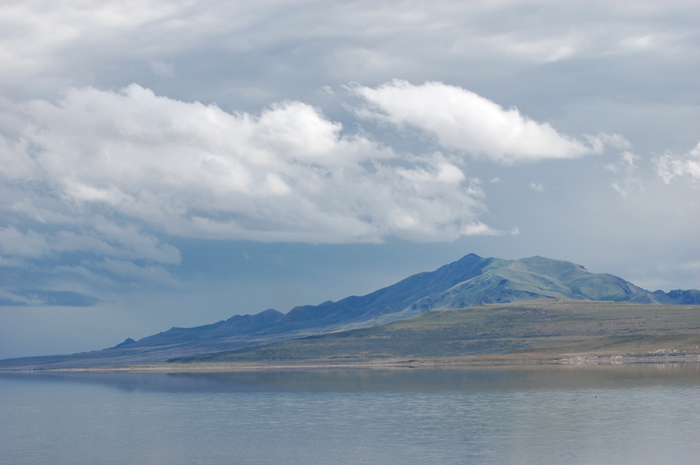Utah County Birders
Newsletter
|
||||||||||||||||||||||
 |
Contents
Monthly Meeting
Upcoming Field Trips
Captain's Log
Bird of the Month
Field Trip Reports
October 11, 2018, 7:00 PM at the Bean Museum on BYU Campus - Map to Museum
Lisa Thompson and Brian Fox from the Utah
Museum of Natural History will be presenting on citizen science projects They
are currently running and the iNaturalist program.
Big Sit!
October 13, 2018. Provo Airport Dike -- The BIG SIT is this Saturday, Oct 13th, from sun up until sun down (or longer for anyone who wants to try for owls in the dark). It's been a couple of years since we've participated, but I didn't want to let another year go by, so this weekend we will rejoin the tradition and host a count circle.
We'll be sitting at the southwest corner of the Provo Airport Dike from 7am until dark or until people don't want to sit anymore. Bring yourself, bring your friends, bring a chair, and come join us (snacks to share are always welcome too)!Eccles Wildlife Education Center!!!!
Saturday Oct 27, 2018
We will meet at 8:30 @ the Pioneer Crossing park and ride and head to Farmington. We get a personal tour with Billy Fenimore!!!! Bring a lunch!Fall migration in ST.GEORGE!!!
Friday November 2nd, meet at 6:30 am at McDonald's on Bluff street. -chasing rarities with Kendall Watkins.
Saturday November 3rd, meet at 6:30 am at the McDonald's on Bluff street. We will be birding at Lytle ranch!!!
We are actively recruiting people to lead local half-day field trips, any time, any place. If you would like to lead a field trip or if you have any ideas for this yearís field trips, please contact Suzi Holt at - suzerqholt@gmail.com
Utah County Birders
Captainís Log: October
2018
by Keeli Marvel
| Greetings
from across the pond! I just spent the last week in Dublin on the East Irish
coast doing touristy things and birding my way around Dublin. I picked up 11
lifers in Ireland and 2 during my 7 hour layover in New York City on the way
there. Talk about a good trip so far! When I found out I was going to be stuck at JFK airport in New York for 7 hours on my layover I contacted the Queens County Birding Club president. He put me in touch with one of the local Birders who offered to pick me up from the airport and take me Jamaica Bay Wildlife Refuge 20 min away from the airport to do a little birding during my layover. I had 3 goal species: American Black Duck, Glossy Ibis, and White-rumped Sandpiper, and we managed to pick up the first two. Jamaica Bay is an urban refuge right on the bay between Queens and Manhattan and can be really good during migration. In Ireland we spent the first day doing touristy things around town, so I didnít get much birding in. Hooded crows and wood pigeons were pretty common around town. The second day was our big birding day. We drove north up the coast from Dublin to a place called Bull Island where we parked at an old bridge and went for a walk along a tidal waterway. Along the jetty and bridge I picked up 7 lifers: European Golden-plover, Common ringed plover, Mew Gull, Rook, Hooded Crow (seen before but not recorded in ebird), European Stonechat, and Reed Bunting. There were also a bunch of Black-headed and Herring gulls, and huge flocks of what sounded like goldfinches and greenfinches to me. Oh, and of course, European starlings hah! From there we went further up the coast to a headland called Howth and went on a couple walks along a coast path and the harbor wall. There were quite a few shorebirds along the shoreline and I saw tons of European Oystercatchers, Common Redshank, more Stonechats, a Curlew, and picked up a lifer Little Egret which is basically the same as our Snowy Egret. In Howth harbor you can see the island off the coast called Irelandís Eye where they get nesting Northern Gannets and Common Murres. You can take boat trips from Howth harbor that go out around Irelandís Eye and get good looks at all the birds that nest an roost on the island. We were too late in the day but we did get looks at some distant flyby gannets. The next day in Dublin we went to the botanical gardens, which is another great place for birding. Entry is free and they have lots of great habitat. There I picked up a lifer Sparrowhawk (similar to our Sharpie/Cooperís Hawks), a Goldcrest (like our kinglets) and a Grey Wagtail, which acts similar to a dipper and can often be found perching on rocks on fast moving streams or rivers. I also saw a couple of my other favorite European birds- Blue Tits which are really common in gardens and city parks, a Long-tailed Tit, and several melodious European Robins. Our second to last day in Dublin we took a boat across Dublin bay to Dun Laoghaire (pronounced Dun Leary), and back out to Howth Head. On the boat ride I picked up Mediterranean gulls, better looks at Northern Gannets, Black Guillemots, Common Murres, and Razorbills! The Mediterranean Gulls and Razorbills were both lifers. The boat is a really nice way to sea the coast and you get great views of several lighthouses on the ride. Thatís it for Dublin! Tune in next month for part two of my birding travelogue: The Netherlands and Germany. Happy Birding! Keeli Marvel |
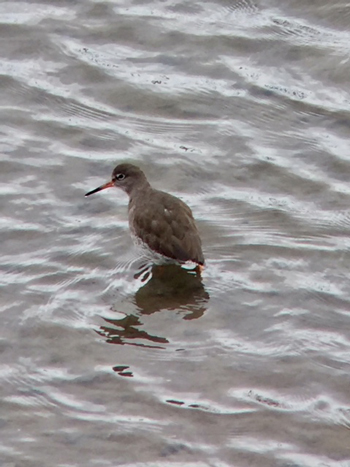 |
|
|
Common Redshank
|
||
|
|
||
|
|
||
|
|
|
|
Secretary Bird
(Sagittarius serpentarius)
Just for fun I thought I would write about something way out there, half
way around the world-out there. Recently my parents went on a trip to
Africa. It was my dad's turn to pick where they would go and he said he
wanted to go on an African Safari, so that's just what they did! I told
them they had to look for a Secretary Bird, and showed them pictures and
videos. They saw lions, hippos, giraffes, wildebeest, wart hogs,
crocodiles, elephants, lots of birds, and yes, they saw a Secretary Bird! |
|
|
|
|
Nine UCBers met on Friday to bird the Antelope Is
Causeway and Garr We made a quick stop at Bountiful Pond on
the way home in search of the reported Brown Thrasher, but we were not able
to find it. We did see both CASPIAN and FORSTERíS TERNS, a GRAY CATBIRD and
a GREEN-TAILED TOWHEE.
|
|
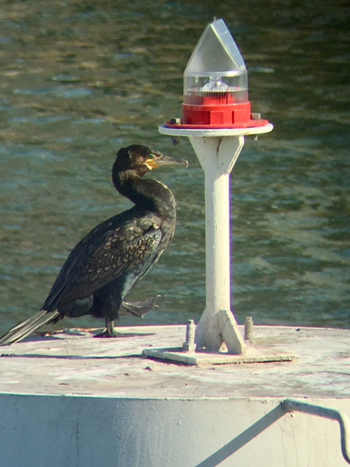
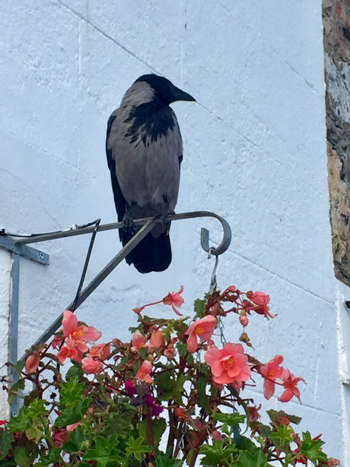
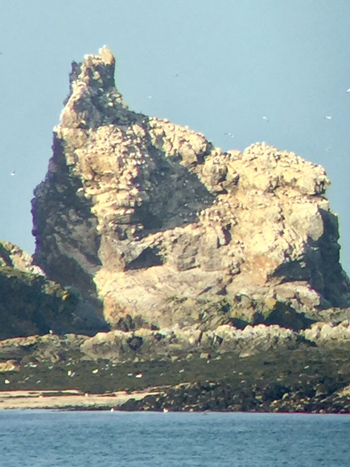
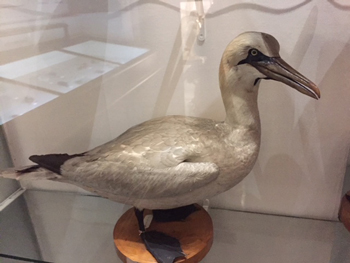 Northern Gannet at the natural
Northern Gannet at the natural 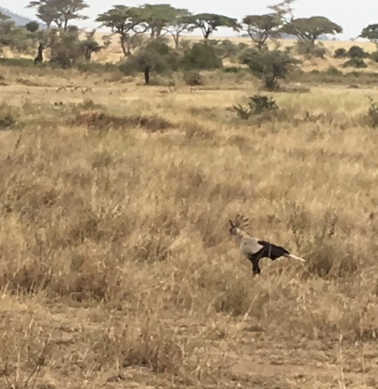
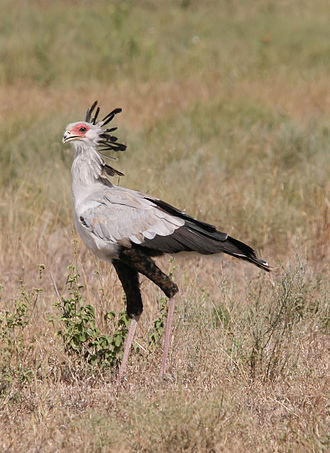 habitat with long strides.
Prey is flushed out of tall grass by the birds stomping on the surrounding
vegetation. It also waits near fires, eating anything it can that is
trying to escape. They can either catch prey by chasing it and striking
with the bill and swallowing, or stamping on prey until it is rendered
stunned or unconscious enough to swallow.
habitat with long strides.
Prey is flushed out of tall grass by the birds stomping on the surrounding
vegetation. It also waits near fires, eating anything it can that is
trying to escape. They can either catch prey by chasing it and striking
with the bill and swallowing, or stamping on prey until it is rendered
stunned or unconscious enough to swallow. 